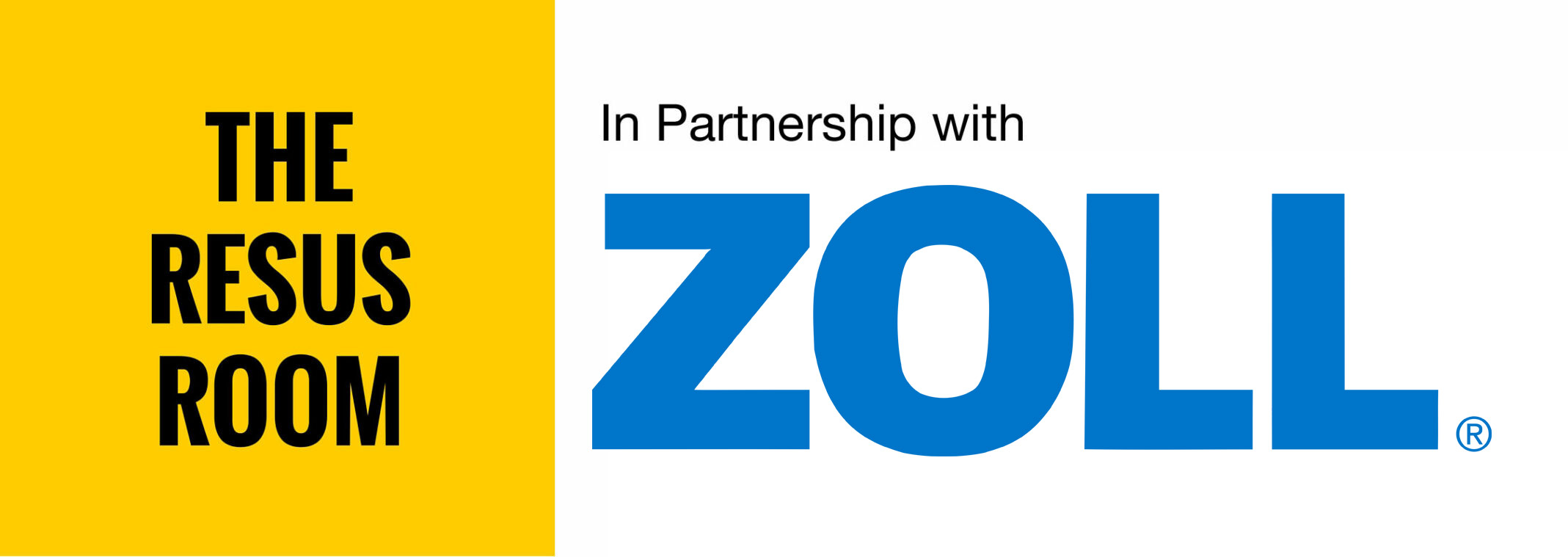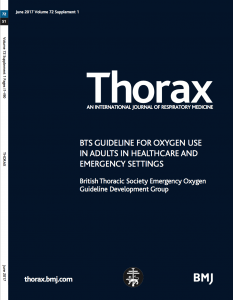Oxygen is probably the drug that we give the most but possibly has the least governance over. More has got to be good except in those at high risk of type II respiratory failure right?? Well as we know the evidence base has swung to challenge that idea in recent years and the new BTS guidelines for Oxygen use in Healthcare and Emergency Settings has just been published with a few things that are worth reviewing since the original publication in 2008. No apologies that this may be predominantly old ground here, this is an area we’re all involved with day in and day out that is simple to correct and affects mortality
Historically oxygen has been given without prescription;
- 42% of patients in the 2015 BTS audit had no accompanying prescription
- When it is prescribed this doesn’t always correlate with delivery
- 1/3 of patients were outside of target SpO2 range (10% below & 22% above)
If nothing else is taken from this document then reinforcement of the fact that we need to keep oxygen saturations normal/near normal for all patients, except groups at risk of type II respiratory failure
Prescribe and delivery oxygen by target oxygen saturations
What is normal?
- Normal Oxygen saturations for healthy young adults is approximately 96-98%, there is minor decrease with increasing age.
- Healthy subjects desaturate to 90% SpO2 during night time; be cautious interpreting a single oximetry reading from a sleeping patient, short duration overnight dips are normal
Will mental status give me an early indication of hypoxaemia?
- No, impaired mental function at a mean value of SaO2 64%, no evidence above SaO2 84%
- Loss of consciousness at a mean SaO2 56%
Aims of oxygen therapy
- Correct potentially harmful hypoxia
- Alleviate breathlessness only in those hypoxic
Why the fuss about hyperoxia?
Hyperoxia has been shown to be associated with
- Risk to COPD patients and those at risk of type II respiratory failure
- Increased CK level in STEMI and increased infarct size on MR scan at 3 months
- Association of hyperoxaemia with increased mortality in several ITU studies
- Worsens systolic myocardial performance
- Absorption Atelectasis even at FIO2 30-50%
- Intrapulmonary shunting
- Post-operative hypoxaemia
- Coronary vasoconstriction
- Increased Systemic Vascular Resistance
- Reduced Cardiac Index
- Possible reperfusion injury post MI
In patients with COPD studies have showed most hypercapnia patients arriving at hospital with the equivalent of SpO2 > 92% were acidotic, high concentration O2has been associated with more than double the mortality rate in those with acute exacerbations of COPD. Titrate O2 delivery down smoothly
Which patients are at risk of CO2 retention and acidosis if given high dose oxygen?
- Chronic hypoxic lung disease
- COPD/CF/Bronchiectasis
- Chest wall disease
- Kyphoscoliosis
- Thoracoplasty
- Neuromuscular disease
- Morbid obesity with hypo ventilatory syndrome
What is the oxygen target?
Oxygen titrated to an SpO2 of 94-98%
Except in those at risk of hypercapnia respiratory failure, then 88-92%(or specific SpO2 on patient’s alert card)
What about in Palliative Care?
Most breathlessness in cancer patients is caused by airflow obstruction, infections or pleural effusions and in these cases the issues need to be addressed. Oxygen does relieve breathlessness in hyperaemic cancer patients but not if SpO2 >90%. Midazolam and morphine also relieve breathlessness and are more likely to be effective.
Delivery Devices
- Reservior masks can deliver O2 concentrations between 60-80%
- Nasal cannualae at 1-6L/min can deliver 24-50%
- Venturi masks allow accurate delivery of O2
- If tachypnoeic over 30 breaths per minute an increase over the marked flow rate should be delivered, note this won’t increase the FiO2!
Equivalent doses of O2
24% venturi = 1L O2
28 % venturi = 2L O2
35% venturi = 4L O2
40% venturi = nasal/facemask 5-6LO2
60% venturi = 7-10L simple face mask
Approach to oxygen delivery
Firstly determine if at risk of type II respiratory failure
If not;
- SpO2 < 94%, deliver oxygen
- Perform an ABG
- If high PCO2 consider invasive ventilation, in the interim aim SpO2 94-98%
- If PCO2 normal or low aim SpO2 94-98% and repeat ABG in 30-60 minutes
If at risk of type II respiratory failure
- Obtain ABG if hypoxic or already on oxygen
- If a respiratory acidosis consider NIV, address medical condition and senior review. Treat with the lowest FiO2 via venturi or nasal specs to maintain an SpO2 88-92%
- If hypercapnia but not acidotic, titrate the lowest FiO2 via venturi or nasal specs to maintain an SpO2 88-92%. Repeat ABG after change of treatment/deterioration. Consider reducing FiO2 if PO2 on ABG >8kPa
- If PCO2 < 6 (normal or low) aim to keep SpO2 94-98% and repeat the ABG in 30-60 minutes
Points specific to prehospital oxygen use
- A sudden reduction in 3% of SpO2 within the target range should prompt a fuller assessment of the patient
- Pulse oximetry must be available in all locations in which oxygen is being used
- Some patients over the age of 70 when clinically stable may have SpO2 between 92-94%, these patients don’t require O2 therapy unless the SpO2 falls below the level that is known to be normal for that individual
- Patients with COPD should initially be given oxygen via 24% venturi at 2-4L/min or 28% mask at a flow rate 4L/min, or nasal cannulae at 1-2L/min aiming for 88-92%
- Patients over 50 years of age and long term smoker with a history of SOB on exertion and no other cause for their breathlessness should be treated as having COPD.
- Limit O2 driven nebs, if no air driven nebs available, to 6 minutes in duration in patients known to have COPD
In summary….
So the bottom line? Well just like Goldielock’s porridge, with oxygen we don’t want too little, we don’t want too much but we want just the right amount!
There is no doubt that hypoxia kills but beware that too much of anything is bad for you and in the same way we need to be vigilant to targeting oxygen delivery to our patients target SpO2
References
BTS Guideline for oxygen use in healthcare and emergency settings


